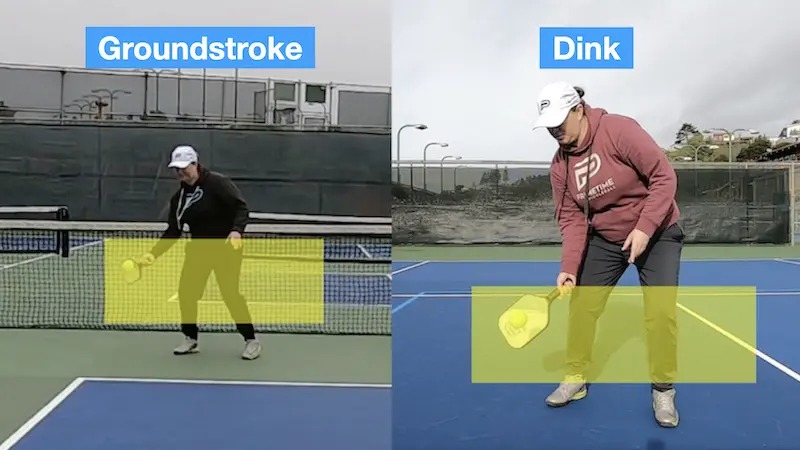Level Up Your Game: Essential Pickleball Tips for Intermediate Players
Pickleball, a paddle sport that blends elements of tennis, badminton, and table tennis, has seen a surge in popularity across all age groups. While it’s easy to learn the basics, mastering the nuances of the game can be a rewarding challenge. As an intermediate player, you’ve laid the groundwork and now it’s time to refine your skills, upgrade your strategy, and truly immerse yourself in the intricacies of the sport. This article aims to provide you with comprehensive Pickleball tips for intermediate players to enhance your pickleball prowess and inject a newfound level of enjoyment into your game.
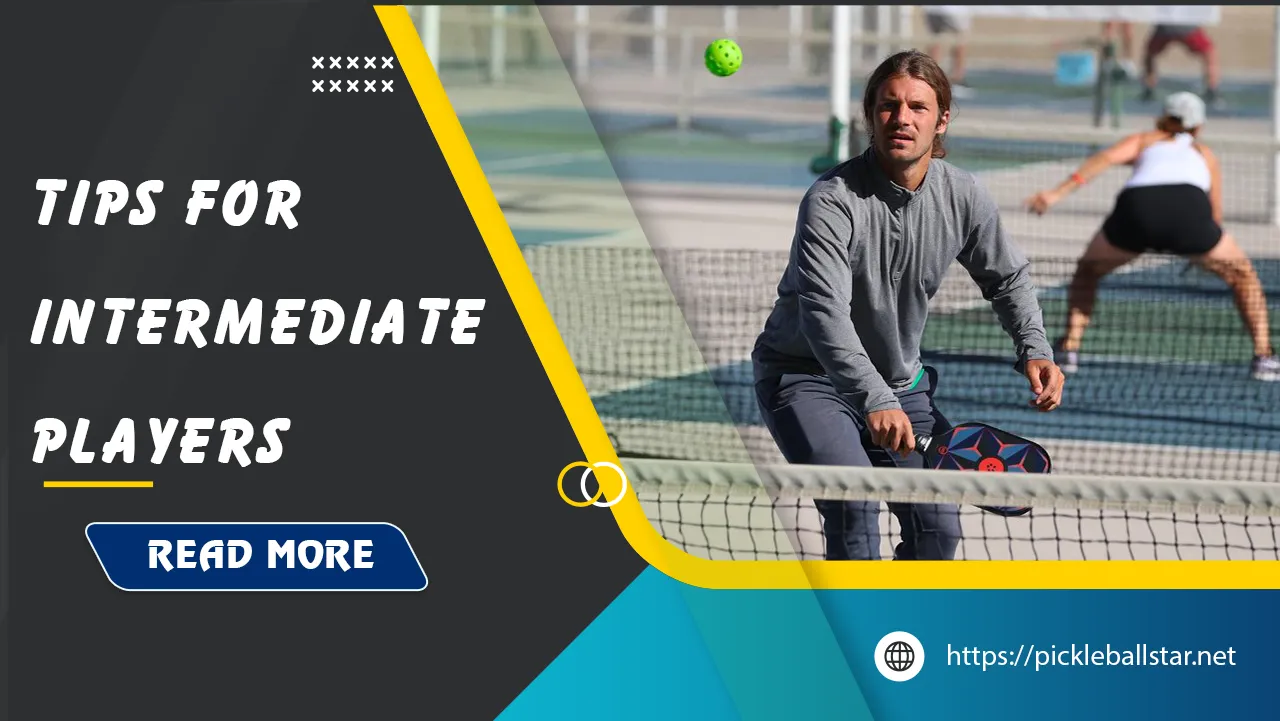
Mastering the Fundamentals
Footwork
Footwork in pickleball can be likened to the foundation of a skyscraper; without it, the entire structure is vulnerable. Mastering footwork goes beyond simply getting to the ball; it encompasses balance, agility, and positioning.
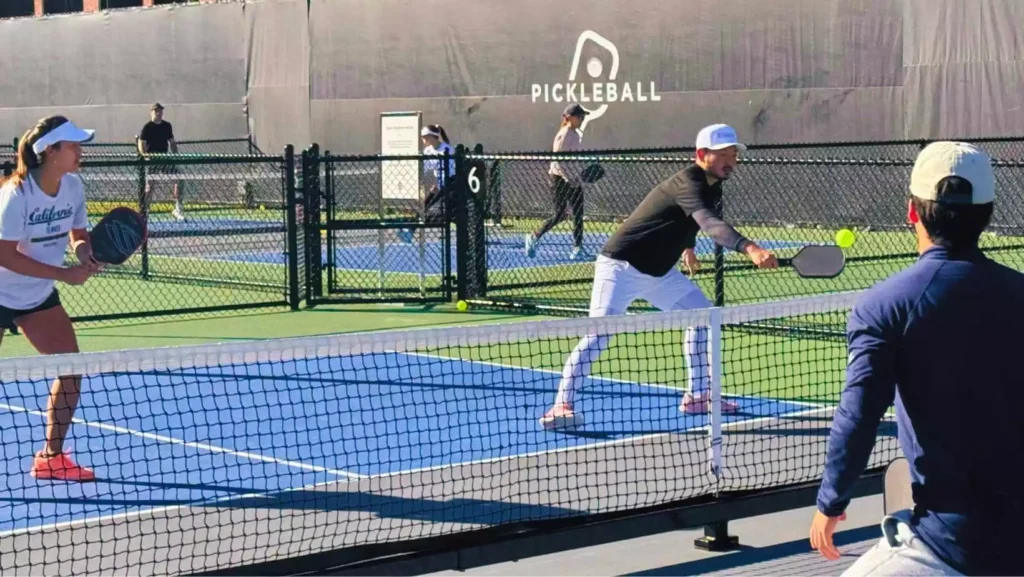
- Quick and Agile Movements:
- Picture yourself as a dancer, moving gracefully yet swiftly across the court.
- Practice lateral movements to make reaching wide shots instinctive.
- Backpedal effectively to ensure you’re always prepared for a potential overhead smash.
- Techniques for Proper Footwork:
- Focus on staying light on your feet. Think of how a cat moves agile and balanced.
- Incorporate plyometric exercises into your routine. Jumping jacks, ladder drills, and cone sprints can be beneficial.
- Maintain a slight bend in your knees and remain on the balls of your feet, ready to spring into action.
- Balance and Lightness:
- Keeping your center of gravity low aids in stability and rapid movement.
- Regularly practice balance exercises, such as standing on one foot for extended periods, to enhance your stability.
Paddle Grip
The paddle grip you choose can significantly influence your control, power, and consistency during a game.
- Different Paddle Grips:
- Eastern Grip: Useful for a combination of forehand and backhand shots.
- Western Grip: Provides extra topspin, aiding in aggressive shots.
- Continental Grip: Known for its versatility, this grip is often favored for serves and volleys.
- Choosing the Right Grip:
- Adapt your grip based on the type of shot you are executing. For instance, using a firmer grip for power shots and a lighter grip for finesse shots like dinks.
- Consistency is crucial. A consistent grip aids in muscle memory, which translates to better accuracy and power over time.
Ready Position
Being ready is more than just a physical stance; it’s a psychological state of alertness and anticipation.
- Importance of the Ready Position:
- Think of the ready position as a sprinter’s stance in the blocks prepared for any twist or turn that may come.
- A well-maintained ready position enables quicker reaction times and better shot execution.
- Optimal Ready Position:
- Stand with your feet shoulder-width apart, knees slightly bent, and weight balanced on the balls of your feet.
- Hold your paddle in front of you, at chest height, with your grip firm yet flexible enough to maneuver quickly.
- Benefits of Maintaining the Ready Position:
- Facilitates quicker responses to your opponent’s shots.
- Enhances your ability to cover the court effectively.
Strategic Play
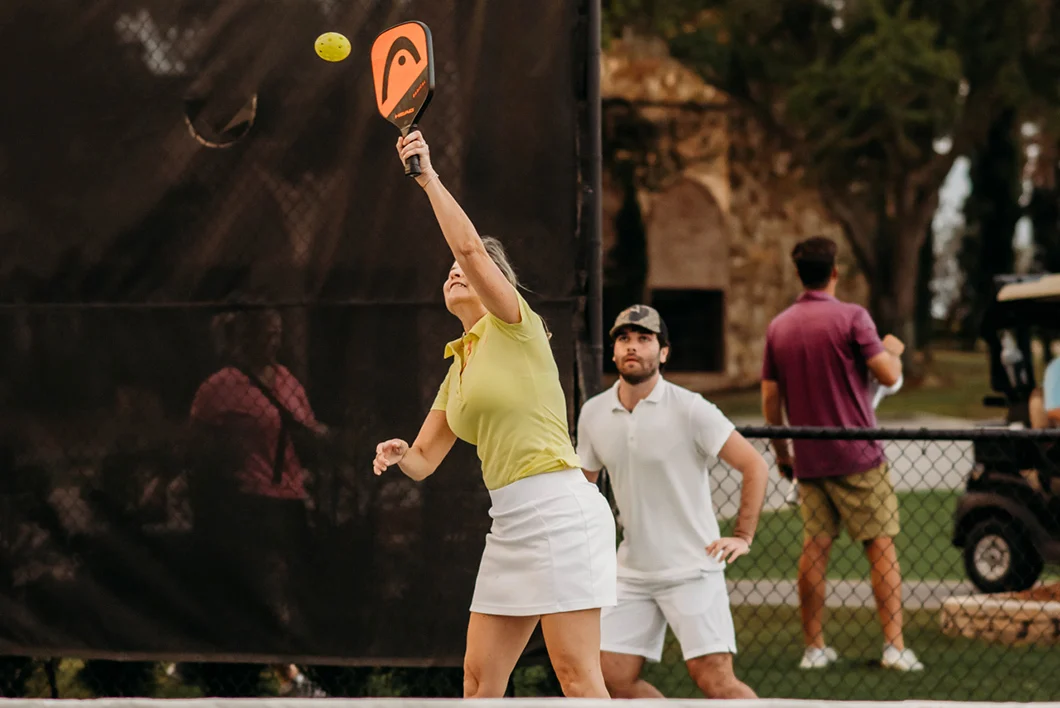
Shot Placement
Strategic shot placement isn’t just about hitting the ball over the net; it’s about outsmarting your opponent and forcing errors.
- Aiming for Specific Areas:
- Targeting the baseline forces your opponent to move backward, often causing them to hit weak returns.
- Aim for the sidelines to exploit opponents who are slow or weak on their feet.
- Using Different Shots:
- Mix up your shots. Combine deep drives with short dinks and lobs to keep your opponent guessing.
- Employ topspin to make the ball bounce higher and confuse your opponent.
- Exploit Weaknesses:
- Pay close attention to your opponent’s responses. Target their backhand if it’s weaker or drive shots to their off-dominant side to unbalance them.
Serving
An effective serve sets the tone for the entire point and can give you a significant advantage from the get-go.
- Types of Serves:
- Flat Serve: Fast and powerful, ideal for creating an offensive opportunity.
- Topspin Serve: Adds a kick to the ball’s bounce, making it harder for opponents to handle.
- Soft Serve: Great for disrupting your opponent’s rhythm.
- Improving Serve Consistency:
- Focus on your toss. A consistent toss results in a more controlled serve.
- Practice serving to different areas of the service box to challenge your opponent’s positioning and mobility.
- Strategic Aims:
- Aim for the corners to force your opponent out of position right from the start.
- Vary the depth of your serves to keep your opponent unsettled.
Returning
A strategic return can flip the script and put you on the offensive instantly.
- Returning Serves Deep:
- Aim to return serves deep into your opponent’s court to push them back and give you control of the net.
- Targeting Weak Areas:
- If your opponent shows a weaker backhand, target this side consistently.
- Using Varied Return Shots:
- Mix in sliced returns to keep the ball low and challenging.
- Aim for body shots to make the return uncomfortable and force errors.
Dinking
Mastering the art of the dink shot is essential for controlling the pace and setting up offensive plays.
- Mastering the Dink Shot:
- Practice soft, controlled shots that land just over the net.
- Use different angles to keep your opponent moving and guessing.
- Strategic Use of Dinks:
- Dinks can be used to lure your opponent closer to the net, setting up an opportunity for a passing shot or lob.
- Changing the pace with dinks can disrupt your opponent’s rhythm and induce errors.
Advanced Techniques
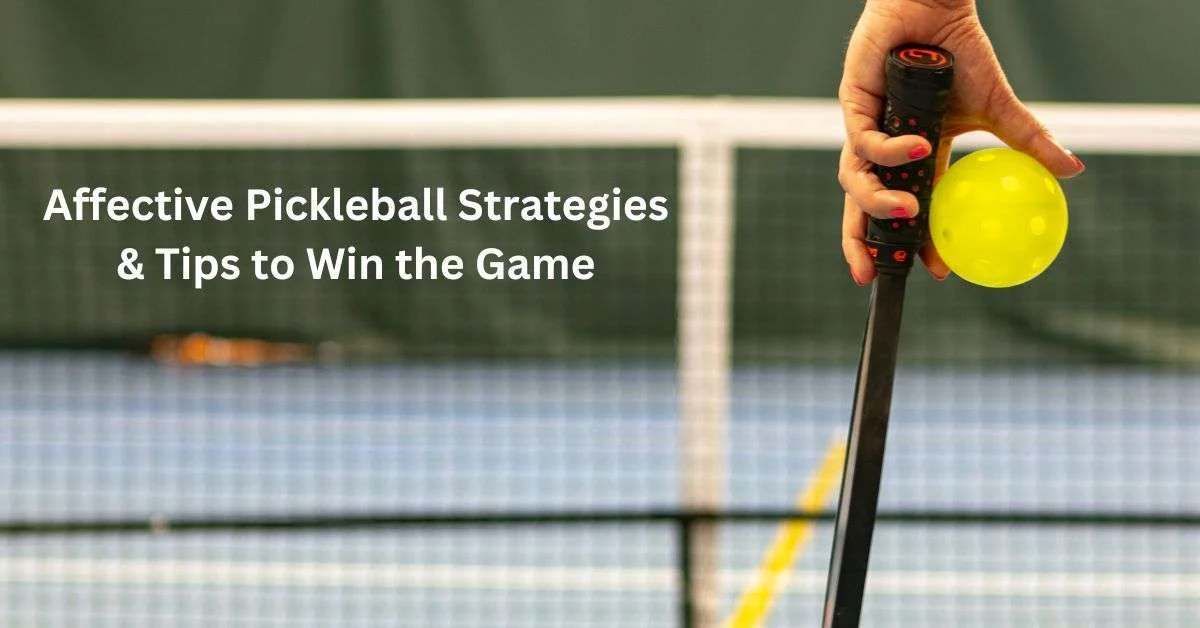
Third Shot Drop
The third shot drop is a cornerstone of pickleball strategy at the intermediate level and beyond.
- Understanding the Third Shot Drop:
- Perform a third shot drop to transition from defense to offense, creating opportunities for you to advance to the net.
- Executing the Shot:
- Focus on a soft touch with a downward angle to ensure the ball lands softly in the non-volley zone.
- Practice varying the height and angle to perfect your consistency.
- Follow-Up Strategies:
- After executing a successful third shot drop, approach the net confidently, setting yourself up for an advantageous volley or dink.
Lobbing
Lobs can be a spectacular offensive weapon or a reliable defensive maneuver.
- Effective Use of Lobs:
- Use lobs to keep your opponent guessing and to relieve pressure when you’re on the defensive.
- Aim for high, deep lobs that push your opponent back, enabling you to regain court position.
- Types of Lobs:
- Offensive lobs aim to disrupt your opponent’s positioning.
- Defensive lobs are used to reset the rally when you’re in a difficult position.
Around the Post (ATP) Shot
An ATP shot can turn the tide of a game, providing a spectacular and unexpected way to score points.
- Executing an ATP Shot:
- Hit the ball around the net post when it’s wide enough, keeping it low and fast to surprise your opponent.
- This shot requires precision and timing, so practice it regularly to build confidence.
- Strategic Use:
- Use the ATP shot to capitalize on your opponent’s overcommitment to a rally, catching them off guard and out of position.
Read more: Pickleball Advanced Tips for Taking Your Game to the Next Level
Doubles Play
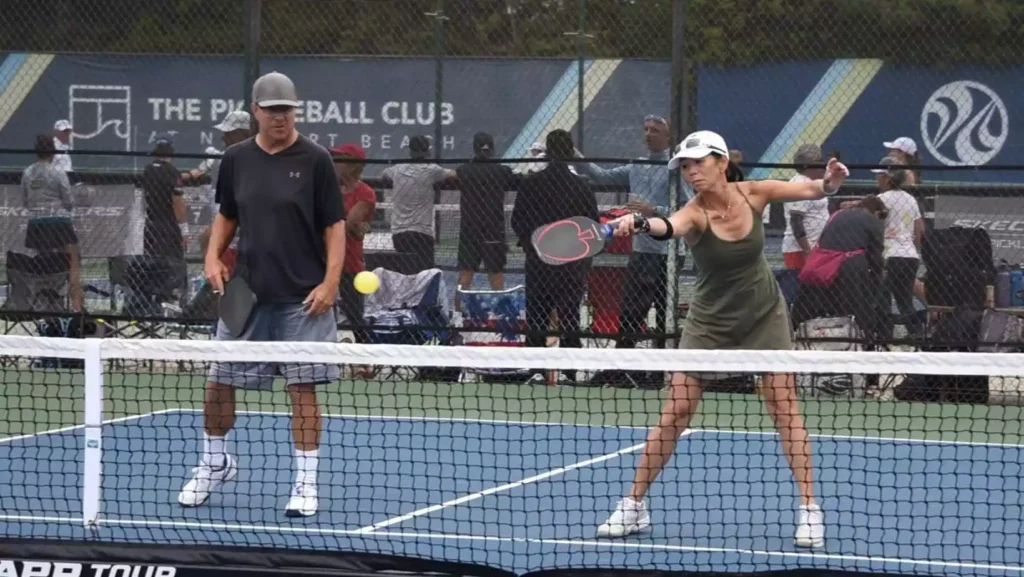
Communication
Effective communication in doubles play can be as crucial as the play itself.
- Clear and Concise Communication:
- Use clear verbal cues and hand signals to indicate your intentions to your partner.
- Strategies for Communication:
- Develop predetermined signals for specific plays to avoid confusion mid-rally.
- Communicate before and after points to ensure alignment on strategy and positioning.
Positioning
Proper positioning in doubles can lead to better court coverage and more successful plays.
- Strategic Positioning:
- Maintain a staggered formation to cover more ground.
- Shift together, moving in unison based on the flow of the rally.
- Adapting Positioning:
- Adjust your positioning based on your opponent’s tendencies. If they favor cross-court shots, prepare accordingly.
Targeting the Weaker Player
In doubles, targeting the weaker player can be a game-winning strategy.
- Effectively Attacking Weaker Players:
- Identify the weaker player early in the match.
- Direct more shots to this player, exploiting their weaknesses to gain an upper hand.
- Exploiting Weaknesses:
- Continually assess your opponents’ weaknesses and adapt your strategy to exploit these areas consistently.
Mental Game
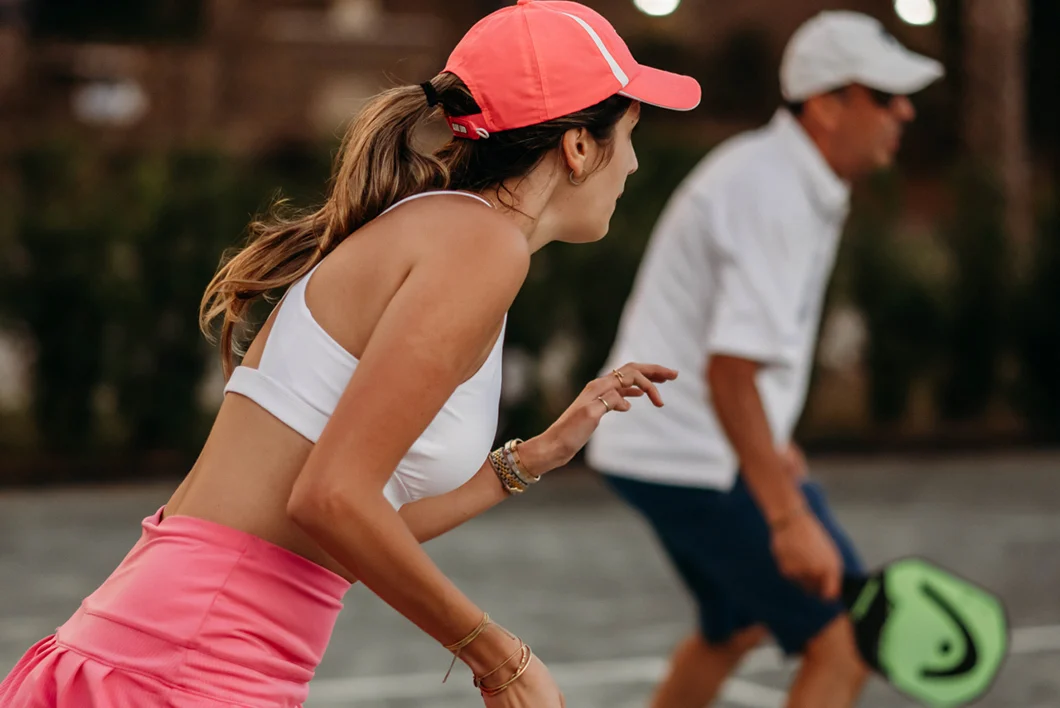
Focus and Concentration
The mental aspect of pickleball can be just as demanding as the physical.
- Staying Focused:
- Treat each point as an individual entity, maintaining full focus regardless of the score.
- Implement concentration techniques like visualization and deep breathing exercises.
- Overcoming Distractions:
- Learn to block out external distractions by concentrating on the game and your objectives.
- Maintain a positive attitude, focusing on your strengths and previous successes.
Playing with Confidence
A confident mindset can elevate your game to new heights.
- Building Confidence:
- Consistent practice and positive reinforcement can help build lasting confidence.
- Reflect on your successful shots and strategies to boost your self-belief.
- Maintaining a Positive Mindset:
- Don’t let mistakes dwell; view them as opportunities for learning and growth.
- Keep encouraging and support your partner, fostering a positive team environment.
Learning from Mistakes
Mistakes are not the end but rather the stepping stones toward improvement.
- Analyzing Mistakes:
- After each game, take time to reflect on what went wr ong and why.
- Use this analysis to pinpoint areas of improvement, making each mistake a learning opportunity.
- Incorporating Feedback:
- Seek feedback from coaches or more experienced players to gain insights into your game.
- Regularly refine your skills based on this feedback, striving for continuous improvement.
Conclusion
Pickleball offers endless opportunities for growth, whether it’s mastering a new shot, refining your strategy, or developing a stronger mental game. As an intermediate player, embracing these pickleball tips can propel your skills to the next level. Practice diligently, respect your opponents, and most importantly, have fun. The more you play and explore the nuances of pickleball, the richer and more rewarding the experience will be. So, grab your paddle, hit the court, and unleash your potential pickleball awaits!

